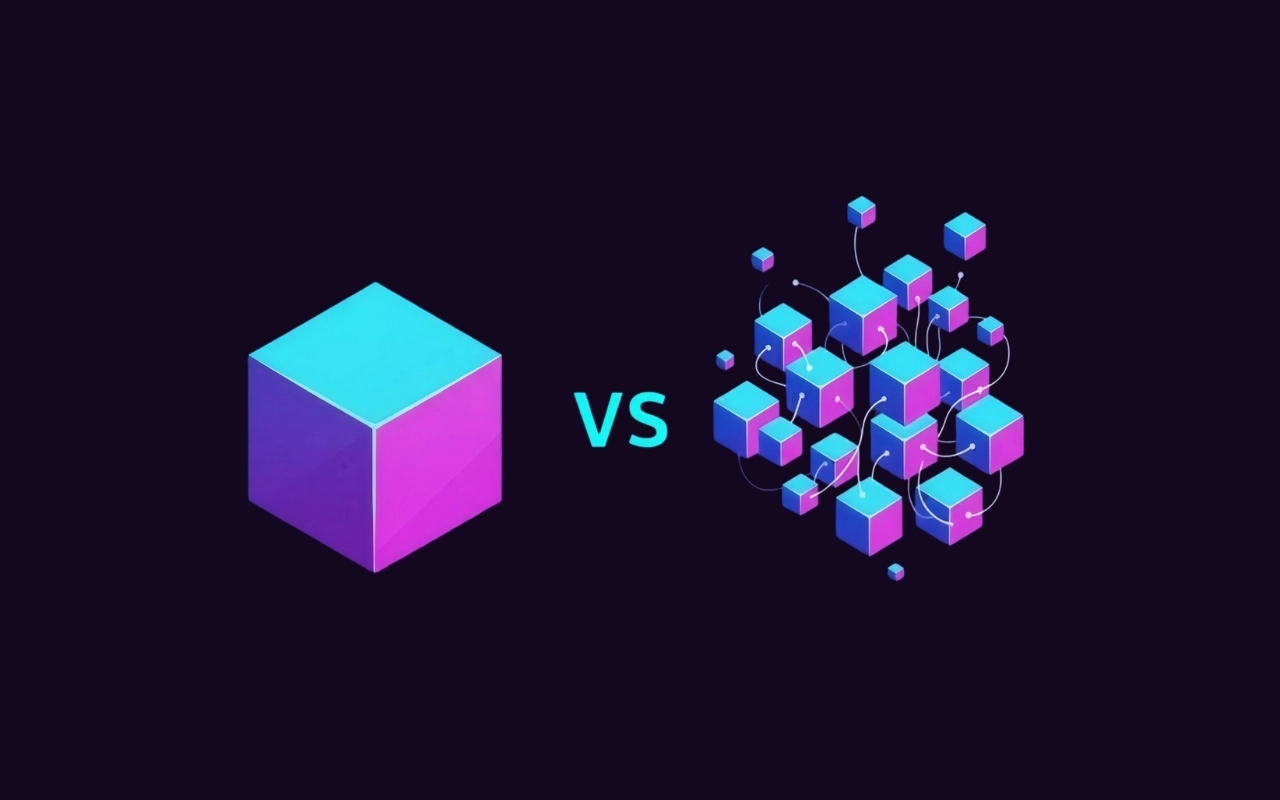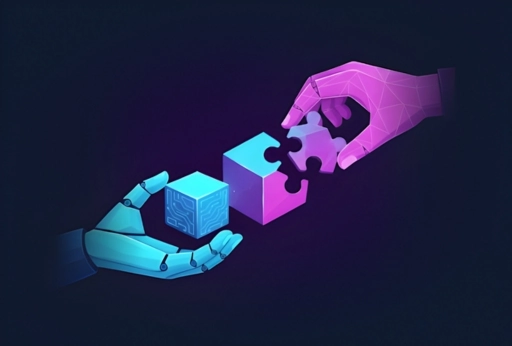Ever wondered how intelligent systems make decisions and act autonomously? Welcome to the world of agentic AI—a fast-evolving field that’s redefining the way we build intelligent, adaptive software. For today’s developers, mastering agentic software development is no longer optional—it’s essential.
Imagine creating an AI that doesn’t just execute commands but anticipates needs, adapts to new situations, and learns over time. This is the core of agentic systems development—where autonomous agents interact with environments and make real-time decisions with minimal human input.
But how exactly do you design these intelligent systems? What components make them tick? And how can you implement these frameworks to build breakthrough applications?
In this guide, we’ll demystify the world of agentic systems—from definitions to real-world use cases, and key components to design best practices.
What is an Agentic System?
Agentic Systems Definition
In simple terms, an agentic system is one that can perceive its environment, make decisions, and act independently toward achieving specific goals. This sets it apart from conventional systems that rely on predefined scripts and static rules.
Key characteristics of Agentic AI System
Agentic systems are characterized by their ability to operate autonomously, make decisions, and interact with their environment. These systems exhibit the following key characteristics:
- Autonomy: Operates without continuous human oversight
- Goal-orientation: Driven by clearly defined objectives
- Adaptability: Adjusts to dynamic inputs and environments
- Learning: Continuously improves based on experience
- Proactivity: Initiates actions based on context, not just input
Agentic and Non-Agentic Systems
To highlight what makes agentic systems unique, here’s a comparison with traditional non-agentic systems:
| Aspect | Agentic Systems | Non-Agentic Systems |
|---|---|---|
| Decision-making | Autonomous | Predefined or externally controlled |
| Adaptability | High | Low or none |
| Learning capability | Continuous | Limited or none |
| Goal orientation | Self-directed | Externally set |
| Interaction | Proactive | Reactive |
Real-World Examples of Agentic Systems
Agentic systems are increasingly prevalent in various domains:
- Autonomous vehicles: Self-driving cars that navigate and make decisions in real-time
- Smart home assistants: AI-powered devices that learn user preferences and automate tasks
- Algorithmic trading systems: Financial software that analyzes market trends and executes trades
- Industrial robots: Machines that adapt to manufacturing processes and optimize production
These are examples of agents in artificial intelligence and how these systems are revolutionizing industries by introducing autonomous decision-making and adaptive behavior.
Core Components of Agentic Software Development
Decision-Making Algorithms
Every agent program in AI relies on robust decision-making logic. These algorithms enable the system to process information, evaluate options, and make autonomous choices. Key types include:
- Rule-based systems
- Probabilistic models
- Machine learning algorithms
- Deep learning neural networks
These algorithms allow agentic systems to evaluate options and act with purpose.
Learning Mechanisms
For any agentic AI to function intelligently, learning is key. These mechanisms allow the system to adapt and refine its behavior based on experience and feedback. Common learning approaches include:
- Supervised learning
- Unsupervised learning
- Reinforcement learning
- Transfer learning
| Learning Type | Description | Best Use Case |
|---|---|---|
| Supervised | Learns from labeled data | Classification tasks |
| Unsupervised | Finds patterns in unlabeled data | Clustering, anomaly detection |
| Reinforcement | Learns through trial and error | Game playing, robotics |
| Transfer | Applies knowledge from one domain to another | Multi-task learning |
Goal-Drive behavior
Agentic systems are designed to pursue specific objectives autonomously. This component involves:
- Setting measurable goals
- Evaluating outcome
- Using rewards to reinforce correct behaviour
- Optimizing strategies
These elements work together to guide the system’s actions towards desired outcomes.
Environment Interaction
Interacting with the world is core to agentic systems development:
- Real-time sensor input
- Actuator control systems
- Continuous data interpretation
- Fast adaptation to feedback loops
Flexibility and Adaptibility
To thrive in dynamic environments, agentic systems need to be adaptable and flexible.These systems require:
- Modular, reconfigurable architectures
- Resilience to edge cases
- Support for multi-modal learnin
- Scalability across contexts
These features allow the system to maintain performance across varying conditions and tasks.
With these core components in place, developers can create powerful agentic systems capable of autonomous decision-making and continuous improvement. Next, we’ll explore the numerous benefits that implementing such systems can bring to various industries and applications.
Why Agentic AI Matters: Benefits & Use Cases
Superior Problem-Solving Capabilities
Agentic systems bring a new dimension to problem-solving in software development. By implementing agentic software development, these systems can analyze complex problems from multiple angles, often uncovering solutions that human developers might overlook. Here are some key ways agentic systems enhance problem-solving:
- Pattern recognition: Quickly identify trends and patterns in large datasets
- Adaptive learning: Continuously improve problem-solving strategies based on past experiences
- Multi-variable analysis: Consider numerous factors simultaneously to find optimal solutions
- Scenario simulation: Run multiple “what-if” scenarios to predict outcomes
Enhanced Efficiency for Complex Tasks
One of the most significant benefits of implementing agentic systems is the dramatic improvement in efficiency, especially when dealing with complex tasks. These systems can:
- Process vast amounts of data in real-time
- Perform repetitive tasks without fatigue
- Work 24/7 without breaks
- Scale operations seamlessly as demand increases
| Task Type | Traditional Approach | Agentic System Approach |
|---|---|---|
| Data Analysis | Hours or days | Minutes or seconds |
| Decision Making | Prone to human bias | Objective and data-driven |
| Resource Allocation | Manual and time-consuming | Automated and optimized |
| Error Detection | Periodic checks | Continuous monitoring |
Increased Autonomy in Software Applications
Agentic systems bring a new level of autonomy to software applications, reducing the need for constant human intervention. This autonomy manifests in several ways:
- Self-optimization: Applications can adjust their performance parameters based on usage patterns
- Automated decision-making: Systems can make informed choices without human input
- Predictive maintenance: Anticipate and address potential issues before they become problems
- Dynamic resource allocation: Allocate computational resources in real-time based on demand
Potential for Innovative Solutions
Perhaps the most exciting benefit of agentic systems development is their potential to generate innovative solutions. By approaching problems from unique perspectives and combining information in novel ways, these systems can:
- Discover new approaches to longstanding challenges
- Identify previously unseen connections between disparate data points
- Generate creative solutions that may not occur to human developers
- Accelerate the pace of innovation by rapidly iterating through potential solutions
The benefits of implementing agentic systems are far-reaching and transformative. From enhancing problem-solving capabilities to driving innovation, these systems are poised to revolutionize software development.
Designing Agentic Systems: Best Practices
A. Define Clear Objectives
Effective agentic software development begins with defining clear objectives and constraints. This foundational step ensures that the system’s actions align with its intended purpose and operate within acceptable boundaries.
- Specificity: Clearly articulate what the system should achieve
- Measurability: Establish quantifiable metrics for success
- Relevance: Ensure objectives align with overall goals
- Time-bound: Set realistic timeframes for achieving objectives
- Ethical considerations: Define ethical boundaries and constraints
B. IBuild Strong Decision-Making Frameworks
Agentic systems require sophisticated decision-making capabilities to navigate complex environments autonomously. Implementing robust frameworks is essential for effective and reliable operation.
| Framework Type | Description | Best Suited For |
|---|---|---|
| Rule-based | Predefined set of if-then rules | Simple, well-defined scenarios |
| Probabilistic | Uses statistical models to handle uncertainty | Complex, dynamic environments |
| Machine Learning | Learns from data and experiences | Adapting to changing conditions |
C. Integrate Feedback & Learning Loops
To enhance adaptability and performance, agentic systems should incorporate feedback loops and learning mechanisms. These features allow the system to improve over time and respond to changing circumstances.
Key components of effective feedback and learning:
- Real-time data collection and analysis
- Performance evaluation against predefined metrics
- Continuous model updating and refinement
- Adaptive behavior based on past experiences
D. Prioritize Transparency
Transparency and explainability are crucial for building trust in agentic AI. Developers should prioritize creating systems that can provide clear insights into their decision-making processes and actions.
Tools and Tech for Agentic System Development
Machine Learning Frameworks
Machine learning frameworks form the backbone of agentic system development. These powerful tools provide developers with the necessary building blocks to create intelligent, autonomous agents. Some popular frameworks include:
| Framework | Language | Key Features |
|---|---|---|
| TensorFlow | Python, C++ | Large-scale ML, GPU support |
| PyTorch | Python | Dynamic computation graphs |
| Scikit-learn | Python | Easy-to-use ML algorithms |
| Keras | Python | High-level neural networks API |
When choosing a framework factor in :
- Learning curve
- Community support
- Integration capabilities
- Performance benchmarks
Reinforcement Learning Libraries
Reinforcement learning (RL) is crucial for training agents in artificial intelligence. Popular RL libraries include:
- OpenAI Gym: Provides a wide range of environments for training agents
- Stable Baselines3: Offers implementations of state-of-the-art RL algorithms
- RLlib: Scalable RL library built on Ray
These libraries enable developers to implement complex RL algorithms efficiently, accelerating the development of adaptive agentic systems.
Simulation platforms
Testing agent programs in AI requires robust simulation tools. Key platforms include:
- Mesa: A Python-based modeling framework for agent-based simulations
- NetLogo: User-friendly platform for modeling complex systems
- MASON: Java-based multi-agent simulation toolkit
These platforms allow developers to create realistic environments for testing agent interactions and behaviors.
Testing and Evaluation
Key Metrics for Agentic Behavior
When evaluating these systems, it’s important to establish appropriate performance metrics. These metrics help developers assess the effectiveness of their autonomous agents. Key performance indicators include:
- Decision accuracy
- Response time
- Task completion rate
- Resource utilization
- Adaptation speed
| Metric | Description | Importance |
|---|---|---|
| Decision accuracy | Measures the correctness of agent choices | High |
| Response time | Time taken to react to environmental changes | Medium |
| Task completion rate | Percentage of successfully finished tasks | High |
| Resource utilization | Efficiency in using available resources | Medium |
| Adaptation speed | How quickly the agent learns and improves | High |
Simulation Environments for Testing
To ensure the reliability and safety of agentic systems, developers often utilize simulation environments. These virtual testbeds offer several advantages:
- Controlled conditions
- Reproducible scenarios
- Risk-free experimentation
- Scalability for diverse testing
Real-World Deployment Considerations
As we move from simulations to real-world applications, developers must address several critical factors:
- Safety protocols
- Ethical considerations
- Regulatory compliance
- Integration with existing systems
- Scalability and performance under real-world conditions
Post-Deployment Monitoring
To maintain and enhance the performance of the systems post-deployment, implement:
- Real-time performance tracking
- Automated error detection and reporting
- Regular system audits
- Feedback loops for continuous learning
- Periodic updates and refinements based on collected data
These strategies ensure that our systems remain effective and adapt to changing environments over time. With robust testing and evaluation processes in place, developers can create more reliable and efficient autonomous systems.
Final Thoughts
The rise of agentic AI signals a new era in software engineering—one where intelligent systems are no longer reactive but proactive, adaptive, and autonomous. By embracing agentic systems development, developers can unlock new dimensions in innovation, efficiency, and real-world impact.
Whether you’re experimenting with a simple agent program in AI or building a full-scale enterprise system, understanding agentic systems is your gateway to the future of intelligent applications.




